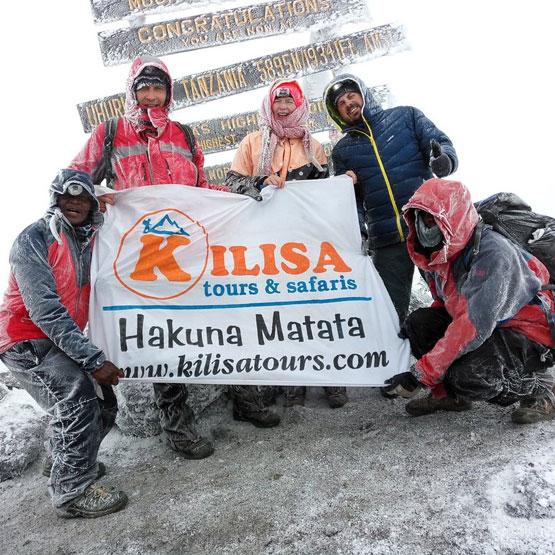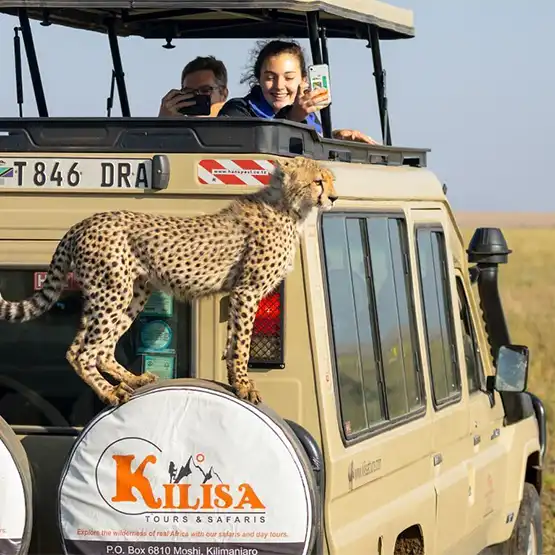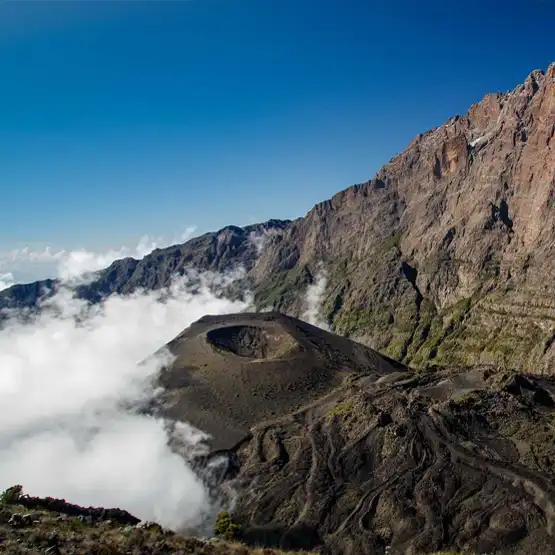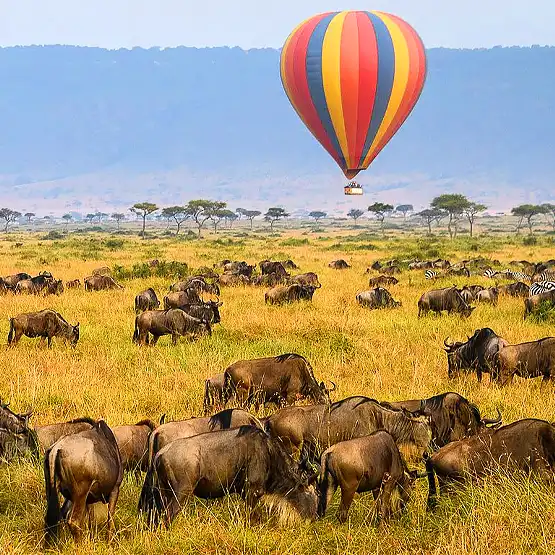Climbing Mount Kilimanjaro is often described as a life-changing adventure, but did you know that only about 45% of climbers actually reach the summit? One key to success lies in the tour booking process. Selecting the right tour operator and itinerary can significantly impact your chances of standing on Uhuru Peak.
Experts suggest researching and choosing a reputable operator with experience and good reviews. Understanding the different routes and their difficulty levels helps in making an informed decision. Interestingly, tours with longer itineraries and acclimatization days have a higher success rate, as they allow your body to adjust to the altitude.
- Choose the best season (January-March or June-October) for favorable weather.
- Select a reputable tour company with positive reviews and experienced guides.
- Understand the various routes to find one that matches your fitness level.
- Consider a longer tour to allow proper acclimatization to high altitudes.
- Prepare adequately for altitude sickness by staying hydrated and taking preventive medications if needed.

Top Tips for Booking a Successful Kilimanjaro Climbing Tour
Choosing the right season for your Kilimanjaro climb is crucial. For instance, the optimal times are typically January to March and June to October. These months offer the best weather conditions. According to this post, trekking during these periods increases your chances of a successful summit. Kilisa Tours can help you identify the perfect season based on your preferences.
Next, selecting a reputable tour company is essential. Look for companies with good reviews and extensive experience. Kilisa Tours, for example, has a proven track record. A reliable tour operator will ensure your safety and provide necessary support. They can also offer comprehensive packages that include food, accommodation, and guides.
Understanding the different routes up Kilimanjaro can affect your experience. Some routes are more challenging than others. The Marangu Route is easier, while the Machame Route is more scenic but tougher. Discuss your fitness level and expectations with your tour operator. This helps in choosing the route that best fits your capabilities.
Finally, it’s vital to prepare well for the altitude. Kilimanjaro’s height means that altitude sickness is a risk. Most experts recommend longer tours with built-in acclimatization days. This allows your body time to adjust. Consider taking medications that can help with altitude sickness.
1. Choose the Right Season
Deciding on the best time to climb Kilimanjaro is crucial for a successful adventure. Typically, the prime seasons are January to March and June to October. These months offer the most favorable weather conditions. Clear skies and minimal rainfall make the trek more enjoyable. Moreover, these periods increase your chances of reaching the summit.
However, each season has its own characteristics. From January to March, the weather is generally colder. This can mean quieter trails. On the other hand, June to October is warmer but more crowded. Weighing these factors will help you decide which season suits you best.
Check the predicted weather conditions before booking your tour. This decision greatly impacts your experience. Be prepared for sudden changes in weather, especially at higher altitudes. A reliable tour operator can help you plan accordingly. They can provide detailed information based on past weather patterns.
Planning ahead ensures you get the best out of your Kilimanjaro climb. Scheduling your trip during the optimal season provides better chances of success. It also makes the journey more enjoyable. Discuss timing with your tour provider, like Kilisa Tours, to optimize your adventure. Their expertise will guide you in picking the right time to climb.
2. Select a Reputable Tour Company
Choosing a reputable tour company is vital for a successful climb up Kilimanjaro. A good tour company ensures your safety and support throughout the journey. Look for operators with strong reviews and a proven track record. For example, Kilisa Tours is known for its excellent service. Trustworthiness can make or break your climbing experience.
Experienced tour operators offer comprehensive packages. These packages often include food, accommodation, and professional guides. Having everything organized makes your trip smoother. You can focus on the climb without worrying about logistics. A reputable company will take care of all the details.
It’s also beneficial to check the qualifications of the guides. Certified guides are essential for a safe climb. They are trained to handle altitude sickness and other emergencies. Having experienced guides increases your chances of a successful summit. Their knowledge of the mountain is invaluable.
Don’t forget to read customer reviews and testimonials. Past climbers’ experiences provide insights into the company’s reliability. Verified reviews can highlight the strengths and weaknesses of a tour operator. Choose a company like Kilisa Tours that has consistently positive feedback. Their success stories can be a reassuring factor for your own climb.
3. Understand the Various Routes
Kilimanjaro offers several climbing routes, each with unique features. The Marangu Route, also known as the “Coca-Cola” route, is considered the easiest. It’s the only route with hut accommodations, making it popular. However, it’s also the busiest. If you prefer less crowded paths, you might consider other routes.
The Machame Route, called the “Whiskey” route, is known for its scenic beauty. It’s more challenging than Marangu but offers fantastic views. This route is ideal for adventurous climbers. It also has a higher success rate due to better acclimatization. Many climbers find the Machame Route rewarding despite its difficulty.
For those seeking solitude, the Rongai Route is an excellent choice. Starting from the north, it offers a quieter experience. This route is less frequented and provides different scenery. It’s suitable for climbers looking to avoid crowds. The Rongai Route is also slightly easier than other paths.
The Lemosho Route is another breathtaking path. It’s known for its stunning landscapes and diverse habitats. This route joins the Machame Route at Shira Plateau. Although it’s a longer route, it’s favored for its beauty. The longer trek allows better acclimatization, which is crucial for success.
The Shira Route is similar to the Lemosho Route but starts higher up. This route is scenic but challenging due to the initial altitude. It’s less popular as a starting point. However, it provides an adventurous climb. Proper acclimatization is essential on this route.
Researching each route helps you make an informed decision. Consult with tour companies like Kilisa Tours for detailed advice. They can recommend the best route based on your fitness level and preferences. Choosing the right path can make your Kilimanjaro climb more enjoyable and successful.
4. Consider the Length of the Tour
The length of your Kilimanjaro tour can greatly affect your experience. Longer tours tend to have higher success rates due to better acclimatization. Tours typically range from 5 to 10 days. Choosing a tour that includes additional days for acclimatization allows your body to adjust to the altitude. This can significantly improve your chances of reaching the summit.
Shorter tours might seem appealing if you’re limited on time. However, they come with greater risks of altitude sickness. You might find yourself rushing through the trek. With less time to adjust, your body may struggle with the higher altitudes. It’s worth considering the trade-off between time and success.
Longer tours offer more than just better acclimatization. They also provide opportunities to enjoy the journey. You can take in the stunning scenery and diverse landscapes. Kilimanjaro boasts beautiful views that are best savored at a slower pace. This can make your climb more enjoyable and memorable.
Additionally, longer tours allow for a more flexible schedule. If you encounter bad weather, you’ll have extra days built into your itinerary. This can be reassuring, especially if you’re climbing during a less predictable season. Flexibility can make a significant difference in your overall experience.
Discuss the length options with your chosen tour operator. Companies like Kilisa Tours offer various packages tailored to different needs. They can recommend the best itinerary based on your time constraints and fitness level. Investing a few more days in your climb can lead to a more successful and fulfilling adventure.
5. Prepare for Altitude Sickness
Altitude sickness is a common challenge when climbing Kilimanjaro. It occurs when your body struggles to adjust to lower oxygen levels at high altitudes. Symptoms include headaches, nausea, and dizziness. To prepare, start by researching and understanding altitude sickness. Knowing what to expect can help you manage it better.
Acclimatization is key to preventing altitude sickness. Choose a tour with built-in acclimatization days. These extra days allow your body to adapt gradually. Walk at a slow and steady pace during your climb. This can help minimize the symptoms and improve your overall experience.
Staying hydrated is crucial when trekking at high altitudes. Drink plenty of water throughout the day. Dehydration can worsen altitude sickness. It’s also a good idea to avoid alcohol and caffeine. They can dehydrate you and exacerbate symptoms.
Consider taking altitude sickness medications. Drugs like Diamox can help reduce symptoms. Consult with your doctor before your trip. They can provide recommendations tailored to your health needs. Always follow your doctor’s advice on medications.
Listening to your body is vital. If you start feeling unwell, don’t push yourself too hard. Inform your guide immediately. They are trained to handle such situations. Climbing Kilimanjaro with a reputable tour company like Kilisa Tours ensures you get the right support. Proper preparation can make all the difference.
Importance of Proper Gear and Preparation
Having the right gear is essential for a successful Kilimanjaro climb. Quality gear ensures you are comfortable and safe throughout the journey. Essential items include a good pair of hiking boots, warm clothing, and a waterproof jacket. Don’t forget a sturdy backpack to carry your essentials. Proper footwear and clothing help protect you from harsh weather conditions.
Packing correctly can make a significant difference in your experience. Be mindful of the weight and functionality of each item. It’s wise to pack layers that you can add or remove as needed. This allows for better temperature control during the climb. Ensure you have enough food supplies, energy bars, and hydration packs.
Preparing physically is just as important as having the right gear. Begin training several months before your trip. Focus on building stamina through regular exercise. Hiking with a loaded backpack helps mimic conditions you’ll face on Kilimanjaro. The more prepared your body is, the easier the climb will be.
Mental preparation cannot be overlooked either. The altitude and physical exertion can be challenging mentally. Keeping a positive attitude helps you stay motivated during tough times on the trail. Practicing mindfulness and stress-relief techniques beforehand can be beneficial.
Consulting with experts like Kilisa Tours ensures you’re well-prepared for every aspect of your journey. They provide detailed packing lists tailored for various seasons and routes. Their expertise helps climbers avoid common mistakes and mishaps.click here .Investing time in proper preparation can significantly enhance your climbing experience, putting you one step closer to reaching Uhuru Peak.
Benefits of an Extended Acclimatization Period
Having an extended acclimatization period is crucial when climbing Kilimanjaro. This extra time allows your body to adjust gradually to the higher altitude. The risk of altitude sickness decreases significantly with proper acclimatization. Longer acclimatization periods lead to a more enjoyable and safer climb. This helps ensure you are physically ready to reach the summit.
Extended acclimatization not only improves your physical readiness but also enhances mental preparedness. Spending extra days on the mountain gives you more time to get used to the environment. This can boost your confidence and morale. You become familiar with the daily routines and altitude effects. All this contributes to a more comfortable and less stressful climb.
An additional benefit is the chance to enjoy Kilimanjaro’s stunning landscapes. More time on the mountain means more opportunities to take in the beautiful views. You can explore and appreciate the diverse habitats. This turns your climb into a richer and more memorable experience. Enjoying the journey can be just as rewarding as reaching the summit.
Extra acclimatization days also provide flexibility in your schedule. If you encounter bad weather or need a rest day, having a buffer in your itinerary can be a lifesaver. This flexibility can make a significant difference in your overall experience. You won’t feel rushed and can tackle challenges more effectively.
Consult with your tour operator about incorporating acclimatization days into your itinerary. Companies like Kilisa Tours can offer tailored plans that prioritize your health and success. Investing in a longer acclimatization period can be the key to a successful Kilimanjaro climb. It’s a small price to pay for a safer and more enjoyable adventure.
Why Choose Kilisa Tours for Your Climb
Choosing Kilisa Tours for your Kilimanjaro climb ensures a memorable and successful journey. With years of experience, Kilisa Tours provides exceptional service and expertise. Their professional guides are trained to handle various challenges the mountain presents. This ensures your safety and well-being throughout the trek. Trusting an experienced operator like Kilisa Tours can make all the difference.
Kilisa Tours offers comprehensive packages tailored to suit different climbers’ needs. These packages often include food, accommodations, and all necessary equipment. You won’t have to worry about logistical details. The company takes care of everything, allowing you to focus on the climb. This convenience can make your experience more enjoyable and stress-free.
Their commitment to sustainability and responsible tourism sets them apart. Kilisa Tours prioritizes the environment and local communities. They ensure that their practices don’t harm the mountain’s delicate ecosystem. This responsible approach also extends to fair treatment and payment of porters. Climbing with a company that values ethics adds value to your adventure.
Customized itineraries are another significant advantage. Kilisa Tours understands that every climber is unique. They offer personalized plans that factor in your fitness level, preferences, and time constraints. Whether you’re seeking a challenging route or a more scenic, relaxed journey, they accommodate your needs. This tailored service ensures a climb that matches your expectations.
Kilisa Tours consistently receives high ratings and positive testimonials from climbers. Reviews highlight their professionalism, friendliness, and attention to detail. Many past clients recommend them for their exceptional service and support. Choosing a tour operator with such positive feedback can boost your confidence in their ability to deliver a great experience.
Impact of a Good Climbing Group
A good climbing group can significantly enhance your Kilimanjaro experience. The camaraderie and support from a well-matched team can boost your morale. Encouragement from fellow climbers helps you push through tough moments. A positive group dynamic can make the journey enjoyable. Sharing the adventure with others creates lasting memories.
Diverse skills and experiences within a group can be beneficial. Some climbers might have valuable tips and advice. Others can share knowledge about different aspects of the climb. This pool of information can improve everyone’s experience. Learning from each other adds to the overall success of the trip.
Safety is another critical aspect impacted by a good climbing group. Team members look out for each other and can assist in emergencies. A well-coordinated group responds better to challenges. This collective effort enhances safety and reduces risks. Being part of a supportive team makes the climb safer.
Motivation can sometimes wane during a grueling climb. Fun and engaging interactions within the group can keep spirits high. Sharing stories and laughs distracts from the physical strain. It injects energy into the group, making the climb more bearable. A good group dynamic turns a tough trek into an enjoyable adventure.
An experienced guide ensures the group remains cohesive and motivated. Companies like Kilisa Tours have guides skilled in building team spirit. They manage group dynamics to keep everyone focused and enthusiastic. Their expertise helps in maintaining a positive environment. A well-led group significantly enhances the overall climbing experience.






